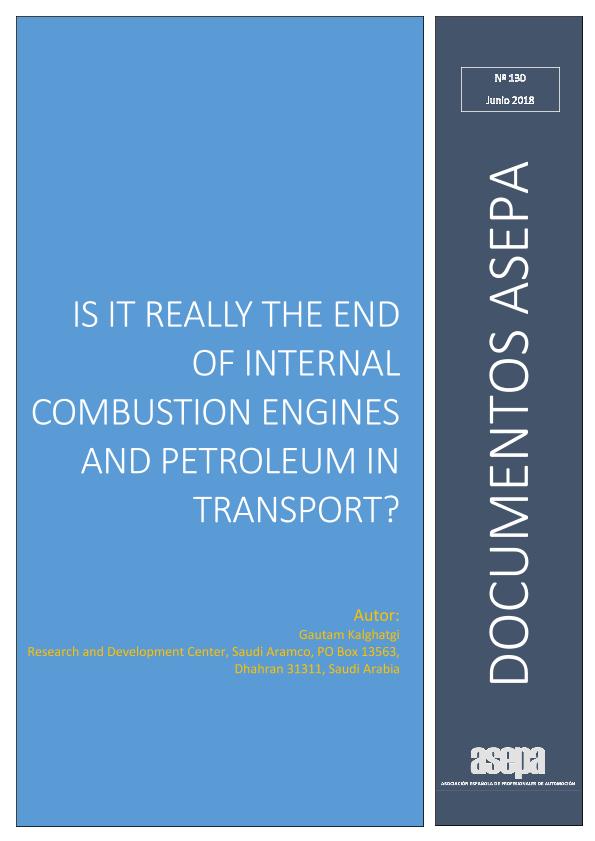Is it really the end of internal combustion engines and petroleum in transport?

Contenido multimedia no disponible por derechos de autor o por acceso restringido. Contacte con la institución para más información.
| Tag | 1 | 2 | Value |
|---|---|---|---|
| LDR | 00000cab a22000004 4500 | ||
| 001 | MAP20180019098 | ||
| 003 | MAP | ||
| 005 | 20180705144021.0 | ||
| 008 | 180626e20180601esp|||| ||| ||eng d | ||
| 040 | $aMAP$bspa$dMAP | ||
| 084 | $a892.5 | ||
| 100 | 1 | $0MAPA20180008900$aKalghatgi, Gautam | |
| 245 | 1 | 0 | $aIs it really the end of internal combustion engines and petroleum in transport?$cGautam Kalghatgi |
| 500 | $aDocumento ASEPA , Nº 130 junio 2018 | ||
| 520 | $aTransport is almost entirely powered by internal combustion engines (ICEs) burning petroleum-derived liquid fuels and the global demand for transport energy is large and is increasing. Available battery capacity will have to increase by several hundred fold for even light duty vehicles (LDVs), which account for less than half of the global transport energy demand, to be run on electricity alone. However the greenhouse gas (GHG) impact of battery electric vehicles (BEVs) would be worse than that of conventional vehicles if electricity generation and the energy used for battery production are not sufficiently decarbonized. If coal continues to be a part of the energy mix, as it will in China and India, and if power generation is near urban centers, even local urban air quality in terms of particulates, nitrogen oxides and sulfur dioxide would get worse. The human toxicity impacts associated with the mining of metals needed for batteries are very serious and will have to be addressed. Large prior investments in charging infrastructure and electricity generation will be needed for widespread forced adoption of BEVs to occur. There will be additional costs in the short term associated with various subsidies required to promote such a change and in the longer term, the loss of revenue from fuel taxes which contribute significantly to public finances in most countries. ICEs will continue to power transport, particularly comercial transport, to a large extent for decades to come and will continue to improve. There will also be a role for lowcarbon and other alternative fuels where they make sense. However such alternatives also start from a low base and face constraints on rapid and unlimited growth so that they are unlikely to make up much more than 10% of the total transport energy demand by 2040. As the energy system is decarbonized and battery technology improves there will be an increasing role for BEVs and hydrogen which could replace liquid hydrocarbons in transport and the required infrastructure will evolve. Meanwhile, there will certainly be increasing electrification, particularly of LDVs in the form of hybridization to improve ICEs. | ||
| 650 | 4 | $0MAPA20080602673$aMotores de combustión | |
| 650 | 4 | $0MAPA20100011164$aVehículos eléctricos | |
| 650 | 4 | $0MAPA20080601201$aEnergías alternativas | |
| 650 | 4 | $0MAPA20080574901$aCalidad del aire | |
| 650 | 4 | $0MAPA20080548599$aPetróleo | |
| 650 | 4 | $0MAPA20080544058$aGasóleo | |
| 710 | 2 | $0MAPA20180003660$aAsociación Española de Profesionales de la Automoción | |
| 773 | 0 | $tApplied Energy.- Amsterdam : Reed Elsevier$gnº 225 (2018); p. 965974 | |
| 830 | 0 | $0MAPA20180003677$aDocumentos Asepa |

